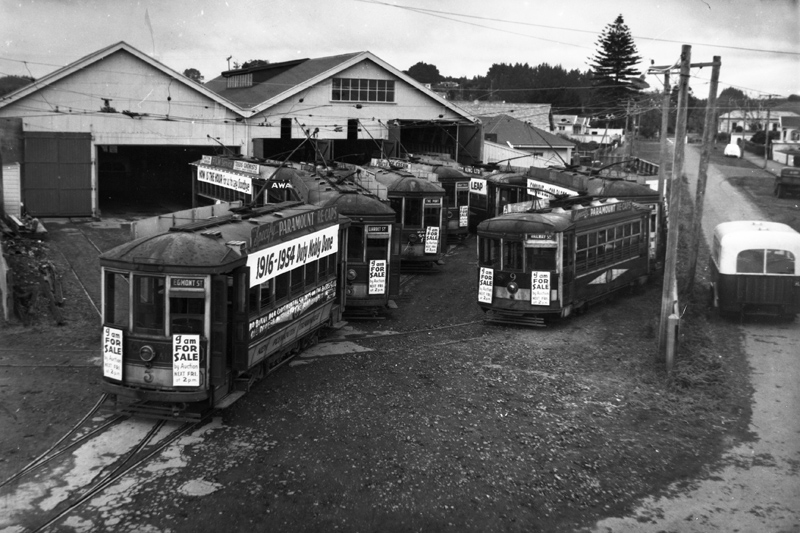
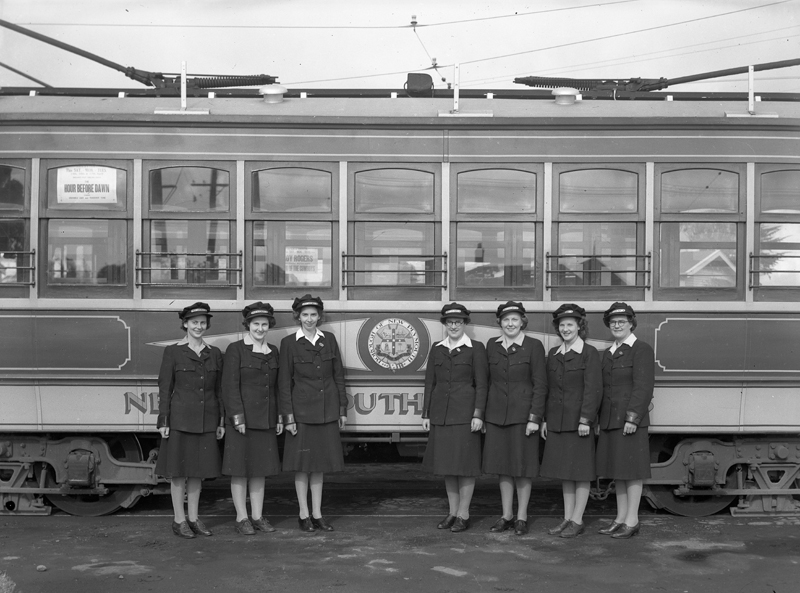
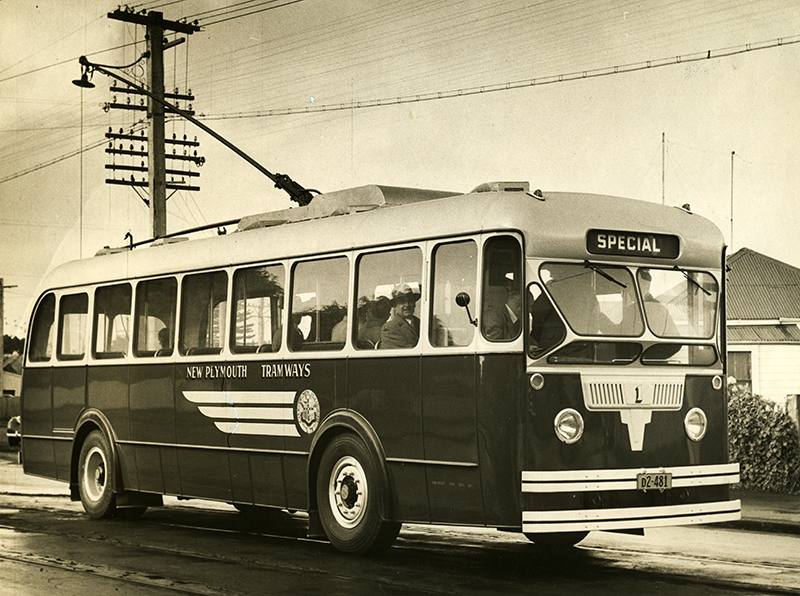
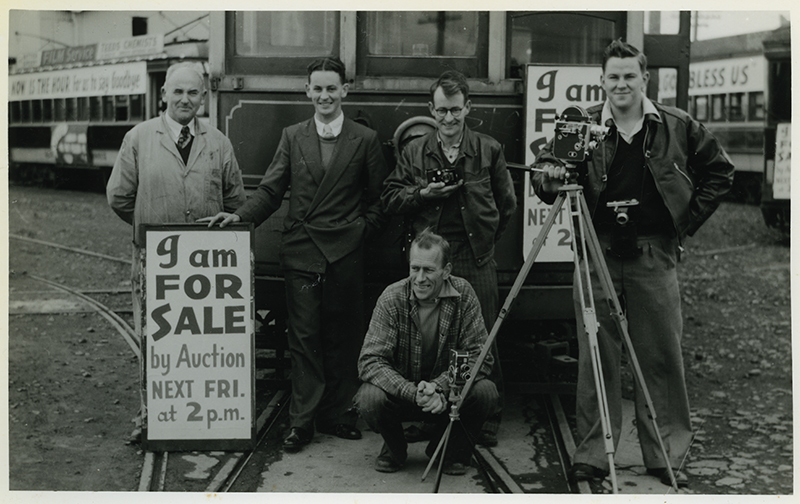
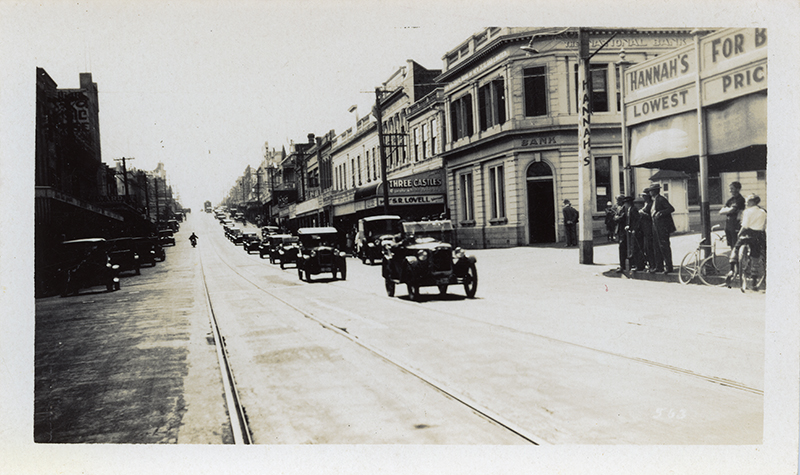
On 10 March 1916, New Plymouth could boast to be the smallest municipality in the world to run a tramway system. New Plymouth was also the last city to install an electric tram system.
Six trams made by Boon and Co of Christchurch started the service between Fitzroy and the Terminus Hotel (now known as the Tasman Towers). Full service to the Port was also to come but was initially delayed because ships carrying essential parts were held up in war-time ports.
In the first week of operation, 18,213 passengers rode the trams. F.T Bellringer, who was town clerk at the time commented "the running of the cars has given an air of briskness to the town, due principally to the great number of people who now come in frequently from the suburbs, who prior to the installation, owing to the difficulty of transit, only came in at long intervals."
Altogether, a fleet of ten “tasteful red and cream” trams serviced the streets and suburbs of Fitzroy, Westown, the Port and Liardet Street. The fare between Fitzroy and the city at the time was one to three pence a section. Special trams were put on to handle theatre traffic.
To encourage smooth running of the new tram system, rules and by-laws were established and strict adherence was enforced. The Taranaki Herald of 22 July 1954 displayed some of these, including:
"Drivers of vehicles are requested to pay particular attention when rounding corners."
"Ladies are reminded that the regulation prohibiting unprotected hat pins projecting from hats will be rigidly enforced."
"Passengers are asked to inform the conductors clearly as to what sections they wish to traverse and as far as possible to avoid tendering large coins."
"Travellers by trams should remember that the side on which to board the cars is the left side in the direction in which the cars are proceeding."
Another first for New Plymouth tramways were the Birney Safety Cars imported from Philadelphia. These were designed to be one-man operation trams with no conductor. They were the first to be used in the country. Their main safety feature was a dead man control, to be used in case the driver collapsed.
Minister of Transport Gordon Coates visited New Plymouth to take a first-hand look at the new cars. During a test run, the driver was asked to demonstrate the dead man's control. "With the tram moving at top speed, he removed his hand from the controls and the tram stopped dead. When the minister and the rest of the tram's passengers picked themselves off the floor they could do nothing but agree that the dead man's control was effective." Fortunately there is no record of the dead man control having to be used in earnest!
The decline of the tramway system finally came with the competition of buses. After World War One, bus services in town were rapidly developed, with the first petrol bus being introduced in 1920. No further trams were ordered from 1923 onwards.
In 1948 the Borough Council installed a trolley bus service along some of the tram routes. The end of era for trams finally came five years later when the trams were taken out of service. The tramlines were removed and diesel buses took over. 23 July 1954 turned into a gala occasion when more than 3000 locals turned up in Devon Street to say their final farewell to the trams. Bands played, streets were closed and a supper was provided at the end of the line.
Every possible tram was in use to provide free rides. "But please don't get on a tram and stay all night because we want to give everyone the chance of a free ride," said Mr Honnor. The trams were richly decorated for their final service. “You'll never miss me again” and “You heard me coming, but you'll never smell me going” were some of the slogans painted on their sides." Mr R.C Alsop and Mr W.Taylor, both of whom had long service records as tram conductors, drove the last official tram.
Stewart, G. (1985). When trams were trumps in New Zealand: an illustrated history. Wellington: Grantham House.
Stewart, G. (1996). Always a tram in sight: The electric trams of New Zealand – 1900-1964. Wellington: Grantham House.
Tullett, J.S. (1981). The Industrious Heart: a history of New Plymouth. New Plymouth: New Plymouth City Council.
Puke Ariki Heritage Collection: Trams
LinkPlease do not reproduce these images without permission from Puke Ariki.
Contact us for more information or you can order images online here.